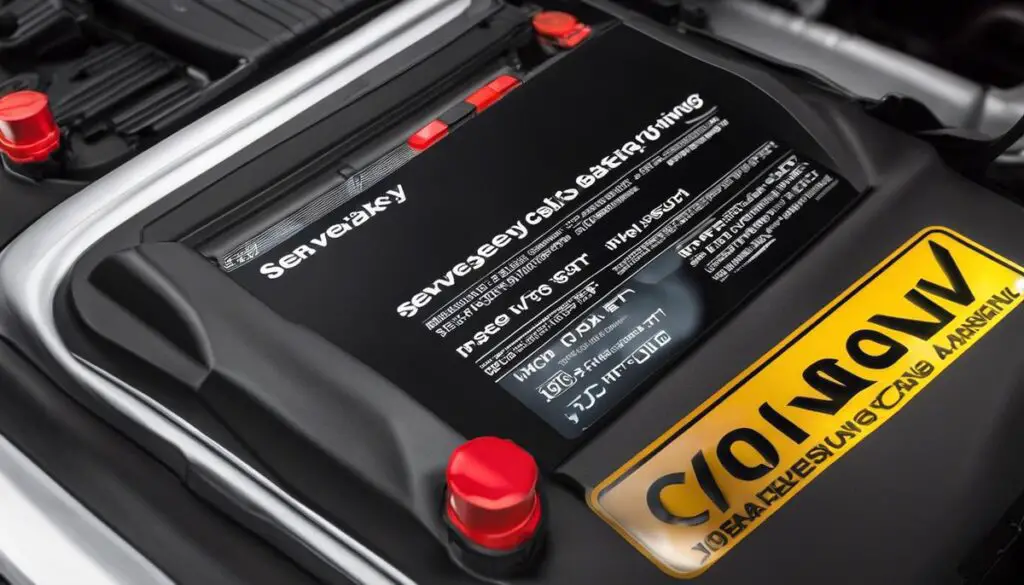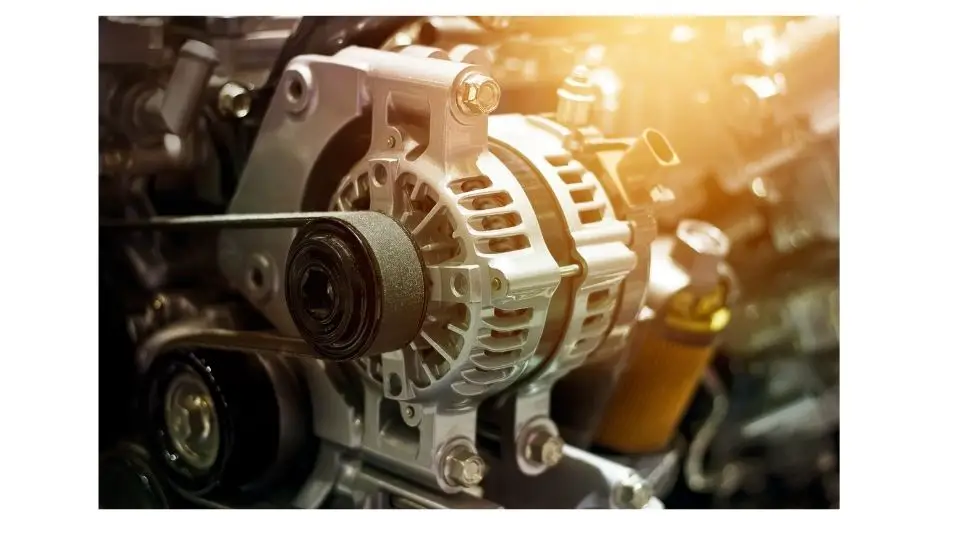The ‘Service Battery Charging System’ message appearing in your vehicle is not a light matter as it indicates a matter that needs addressing promptly. It is the healthier approach to understand such a signal rather than ignore till the condition of your vehicle worsens. Generated by your vehicle’s sophisticated computer system, this notification typically means there is an issue with the essential components of your battery charging system such as the alternator, battery, or the wiring. Grasping the ins and outs of this system and its potential problems will allow you to accurately identify the root of the trouble whenever this message pops up.
Understanding ‘Service Battery Charging System’ Indicator
Demystifying the ‘Service battery charging system’ alert in your Car
A common concern encountered by many car owners is the ominous ‘Service Battery Charging System’ message that occasionally crops up on your vehicle’s dashboard. Although it sounds complicated, let’s decode this message and decipher what it means in layman’s terms. This can empower you to tackle this problem proactively, potentially saving time, money, and unnecessary hassles.
When this warning lights up, it is a direct indication that there’s an issue with the electrical charging system of your automobile. The system is crucial, as it keeps your car’s battery fully charged and ensures smooth running of other electronically-controlled components. If the warning is ignored, it can lead to battery drain and eventually immobilize your vehicle.
This issue can stem from three main components: the battery, the alternator, or the voltage regulator.
- The battery – As the life source of your car’s electrical system, its functions include starting the vehicle’s engine, stabilizing the voltage, and supplying the initial power. A weak or dying battery may trigger the warning. It’s advisable to have your battery tested regularly to avoid sudden failures.
- The alternator – Typically, this gets the attention when there’s a charging system warning. Its role is to maintain the battery charge while supporting the operation of the electrical system when the car is running. Defects in the alternator can prevent the battery from recharging, which can trigger the alert.
- The voltage regulator – This is largely ignored, but is an integral part of the charging system. It regulates the charge from the alternator to the battery, keeping the voltage within the suitable range. A faulty regulator can either overcharge causing premature battery death, or undercharge leading to weak battery and malfunctioning electrical components.
Uncovering the source of the problem requires logical troubleshooting. Start by checking the vehicle’s battery. If the battery is in good condition, take a look at the alternator, its wiring, and the drive belt. If these components appear normal, the voltage regulator becomes the primary suspect.
In any case, invaluable tools like multimeters and battery testers can assist in identifying the faults. However, if you’re not comfortable handling these instruments, it’s always best to leave it up to a professional.
In conclusion, the ‘Service Battery Charging System’ message is a forewarning about an issue within your car’s electrical charging system. Awareness and proactive actions can help resolve the issue efficiently. Keep in mind, regular preventative maintenance can go a long way in ensuring the longevity of your car’s electrical system and ward off catastrophic failures. Technology may have its hiccups, but with a bit of knowledge and the right resources, these obstacles are nothing more than potholes on a road trip.

Identifying Possible Issues with Battery Charging Systems
Diving Deeper: Exploring the intricacies of a Car’s Battery Charging System
Let’s pivot from our general discussion around the car’s charging system to delve deeper into the nitty-gritty involved in the composition and functioning of the very lifeblood of your vehicle – its battery, alternator, and voltage regulator.
As an integral part of the auto’s charging system, the battery primarily stores electrical energy required for starting the engine. Essentially, it’s a rechargeable unit housing a series of cells where chemical reaction takes place resulting in generation of an electrical current. Every battery has a specified voltage and capacity level, maintaining which is fundamental for the smooth functionality of your vehicle.
Next up – the alternator. Referred to as the car’s electrical powerhouse, the alternator, running off the engine’s power, generates the electrical supply needed for the vehicle’s systems and accessories while simultaneously replenishing the battery. This multitasker is composed of several elements such as a rotor, stator, diode pack, and drive belt, each playing a critical role in ensuring steady supply of electricity.
The unsung hero in the charging triumvirate is the voltage regulator which, as the name suggests, keeps a tight rein on voltage levels generated by the alternator, preventing any voltage spikes that could potentially damage the battery and other electrical components. Depending on your car’s make and model, the voltage regulator might be housed within or separate from the alternator.
As technical as this may sound, understanding these components and how they function as a team is crucial in discerning potential hiccups. For instance, corrosion, loose connections or aged components may impact the battery; worn-out drive belts, faulty rotor or a failed diode can impair the alternator’s functionality; and an ineffective regulator could result in electrical havoc across the board.
In your techery toolkit, be sure to have a multimeter and a battery tester; these are crucial in assessing your vehicle’s battery status and the output generated by your alternator. Also, remember to check the battery connections and the condition of your drive belt on the regular – it’s the small, consistent checks that often save us from future headaches.
But of course, should these tasks seem overwhelming or outside your comfort zone, always seek professional assistance. Leveraging technology is wonderful, but knowing when to let an expert take the reins is equally important. Looking out for your vehicle’s health is undeniably essential – whether you’re doing the doctoring or calling one in.
The beauty of technology lies in simplicity – it’s when we comprehend the underlying operations that tech truly becomes part and parcel of our lives. And we, as steadfast advocates of technological advancements, swear by this mantra. So, wield the power of information, understand your car’s charging system, and embark on your journey through the fast-paced lanes of the tech highway. Stay curious, keep learning, and remember, every problem has a tech solution waiting to be discovered.

Proper Maintenance and Troubleshooting Tips
Proactive Measures for Maintaining and Troubleshooting Your Car’s Battery Charging System
Business Wire reported in 2020 that battery-related problems are the most common cause of breakdown assistance requests. As technology progresses and cars increasingly integrate digital systems, the demand on the battery becomes more substantial. Understanding how to maintain and troubleshoot the charging system is thus a valuable skill for any car owner.
Let’s delve right into the methods for maintaining and troubleshooting your vehicle’s battery and its related components.
Battery Maintenance: Bolstering the Bedrock of the Charging System
First and foremost, clean the battery terminals regularly to prevent corrosion, which can hamper the battery’s performance. Use a mixture of baking soda and water with a toothbrush or wire brush for optimum results. Post-cleaning, coat the terminals with petroleum jelly to delay future corrosion. Regularly checking the battery’s water levels and refilling it with distilled water also helps maintain its health.
The Alternator: Understanding Checks and Replacements
For the alternator, listed among car-enthusiasts as the heart of the charging system, regularly inspect the alternator’s drive belt for wear and tear. A torn or loose belt doesn’t properly spin the rotor inside the alternator, leading to depleted battery charging. When the drive belt shows signs of cracking or fraying, it should be replaced promptly. Moreover, if you notice a burning rubber smell, it’s an indicator that the belt is slipping on the alternator pulley, denoting a replacement requirement.
Wielding the Voltage Regulator: Keeping Systems Safe
Though often overlooked, the humble voltage regulator plays a pivotal role in your car’s electrical health by shielding other components from voltage spikes. It’s worthwhile to use a multimeter here to check the constant voltage at the battery terminals. If the readings fall outside 13.7-14.7 volts while the engine is running, your voltage regulator likely needs attention.
Tools and Testing: Embrace a DIY Spirit
A variety of tools are available for maintaining and troubleshooting your battery-charging system. A multimeter is essential for checking voltage outputs. Meanwhile, a battery hydrometer helps monitor the battery’s state of charge. Lorecentral suggests that a hydrometer reading less than 1.265 indicates a charged battery, while a reading below 1.200 means the battery is discharged.
Professional Assistance: When the Going Gets Tough… Head to a Pro
Not all of us share the affections of a seasoned gearhead. Even the most tech-savvy motorist may find their limits reached when dealing with the intricacies of a battery-charging system. This is where professional help becomes invaluable.
Knowledge is Power
As technology continues to advance, integrating deep, meaningful understanding of it proves only advantageous. Embracing the technological aspect of automotives can transform a technology enthusiast into a tech-savvy motorist. This transformation ultimately leads to a more intimate understanding of how a vehicle works, enabling active problem solving rather than reactive troubleshooting. In today’s digital age, this shift in perspective can not only empower you but also extend the life span of your vehicle.

While potential issues with your vehicle’s charging system might seem daunting, having an understanding of the system, its main components, and their functions means you will be well-equipped to troubleshoot if this warning message appears. Regular maintenance and prompt attention to the ‘Service Battery Charging System’ indicator ensure the longevity of your vehicle and can save you from unnecessary expenses that come from ignoring signs of trouble. With solid knowledge and a proactive approach towards your vehicle’s health, you’ll be ready to tackle any battery charging system issues head on.

Tomas is a retired Chevy Auto Technician that brings decades of hands-on experience and expertise to the table. He’s also a father to two incredible daughters. He enjoys using his knowledge and experience to help you solve and find reliable information on Chevrolet vehicles. Whether it’s troubleshooting engine problems or providing tips for maintenance, Thomas is committed to helping Chevy owners keep their vehicles running smoothly and safely.




